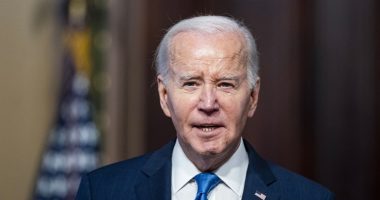Finance chiefs are assessing whether the economic downturn caused by the pandemic could force their companies to make long-term changes to their business models as the coronavirus upends customers’ spending patterns.
Chief financial offers last spring took emergency measures to shore up cash and offset falling revenue, including by selling bonds or slashing costs. Nearly a year later, they are assessing whether recent changes in demand are here to stay—and what that could mean for their operations. The pandemic has prompted consumers to spend less in areas such as air travel and clothing, and more on appliances and higher-end home goods. Companies that rely on revenue from other businesses in hard-hit industries such as retail have also been pinched.
In a recent survey by recruiting firm Stanton Chase, 86% of CFOs said their top priority over the next five years will be to help their businesses adapt and thrive, an increase from 75% a year earlier. The survey, conducted in November and published last week, included responses from about 250 finance chiefs, mostly from midsize, privately held firms across the globe. Finance chiefs were allowed to select more than one answer in response to the questions.
CFOs continue to play a central role in leading their companies through the downturn and planning for the economic recovery, said Cathy Logue, head of Stanton Chase’s chief financial officers practice. “I think their roles are fundamentally and forever changed, in a good way, for those who will be able to step up,” Ms. Logue said.
Sean Gillen was one of many CFOs who had to take swift action. Mr. Gillen, who leads the finance function at AAR Corp. —an aviation parts supplier and services company in Wood Dale, Ill.—cut about $50 million in costs and exited some commercial contracts when the pandemic led to a sharp decline in commercial airline travel. AAR’s profit declined 42% during the quarter ended Nov. 30, compared with a year earlier, to $8.2 million.
AAR used to generate about 60% of sales from commercial airlines before the pandemic, including by supplying parts, providing maintenance and managing inventory. About 40% of revenue came from government contracts with agencies such as the U.S. Defense Department. Revenue from AAR’s government business makes up over 50% now, as the company’s commercial business has been roughly cut in half in recent months.
Mr. Gillen said AAR’s future business mix will be tied to the recovery in the airline sector. “There will be a rebound and a recovery in commercial, so that will naturally kind of creep back up,” he said.
In the Stanton Chase survey, more than half of CFOs said their top priority for 2021 is to develop or execute a company strategy or restructuring plan. Forty-seven percent of executives said they were looking for new business or investment opportunities, including through acquisitions.

Debbie Clifford, CFO of SVMK Inc.
Photo: SurveyMonkey Inc.
Asked about their top challenge over the next three years, about three-quarters of CFOs pointed to the financial impact of the pandemic and the global economic crisis. The U.S. economy, which shrank by 3.5% in 2020 compared with the prior year, is forecast to recover this year. Gross domestic product is expected to return to its pre-pandemic level by the middle of the year, the Congressional Budget Office said earlier this week.
But CFOs still face challenges when trying to predict when their company’s business might pick up.
Debbie Clifford, for example, the finance chief of survey maker SVMK Inc., said last year she began scenario planning with a time frame of two to three years, instead of through the end of 2020, which was the time frame she used before.
“It’s anybody’s guess,” Ms. Clifford said, referring to the length of the economic downturn.
Write to Kristin Broughton at [email protected] and Brooke Henderson at [email protected]
Copyright ©2020 Dow Jones & Company, Inc. All Rights Reserved. 87990cbe856818d5eddac44c7b1cdeb8












